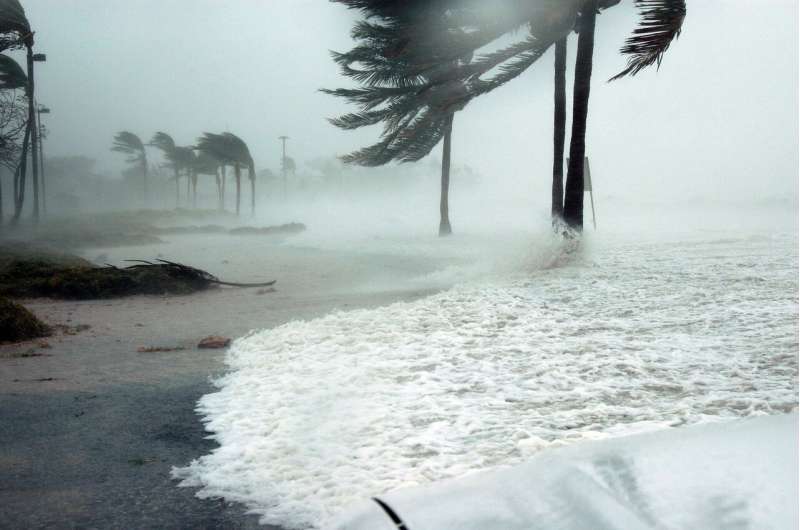Research unveils findings in storm microphysics parameterization
Research led by Professor Ming Xue from the University of Oklahoma’s Center for Analysis and Prediction of Storms has uncovered new insights into microphysics parameterization (MP) schemes, significantly advancing our understanding of ice hydrometeor representations in weather modeling.
Published in Advances in Atmospheric Sciences, the study focused on investigating the complexities surrounding ice hydrometeor representations and related processes within MP schemes.
By conducting idealized supercell simulations using the Weather Research and Forecasting (WRF) model, the research team compared and analyzed the performance of different MP schemes—specifically, the Hebrew University Cloud Model “full” spectral bin MP (HU-SBM), and NSSL and Thompson bulk MP (BMP) schemes.
“In our study, we observed that the way HU-SBM simulated storms resulted in less rain evaporation and weaker downward air movements compared to the NSSL and Thompson schemes,” said the first author, Dr. Marcus Johnson. “Surprisingly, although the HU-SBM scheme produced more cloud ice, graupel, and hail, it actually rained less on the ground. We discovered that HU-SBM’s method of handling certain types of icy particles led to slower melting ice overall compared to the other schemes.”
According to the team, what’s interesting is that HU-SBM also predicted more snow melting to rain because of how ice crystals and snowflakes clumped together and collided with other icy particles, which was different from how other schemes simulated ice particles.
Xue commented, “Our research emphasizes the sensitivity of precipitation to various factors such as storm dynamics, fall speed, hydrometeor evolution, and microphysics parameterization particle size distribution design. These findings will significantly contribute to improving the accuracy of weather models, particularly in predicting severe weather events.”
“Computationally much more expensive BIN schemes have much fewer assumptions about the cloud liquid and ice particle size distributions and have the potential of being more accurate than bulk MP schemes, but specific treatments of MP processes are equally or even more important. In fact, improved treatment of certain processes have been implemented in more recent versions of the HU-SBM scheme, leading to improved simulations.”
The implications of this study extend to enhancing forecasting accuracy and understanding the nuances of storm dynamics, providing valuable insights for meteorologists and climate scientists globally.
More information:
Marcus Johnson et al, Comparison of a Spectral Bin and Two Multi-Moment Bulk Microphysics Schemes for Supercell Simulation: Investigation into Key Processes Responsible for Hydrometeor Distributions and Precipitation, Advances in Atmospheric Sciences (2024). DOI: 10.1007/s00376-023-3069-7
Citation:
Research unveils findings in storm microphysics parameterization (2024, March 19)
retrieved 19 March 2024
from https://phys.org/news/2024-03-unveils-storm-microphysics-parameterization.html
This document is subject to copyright. Apart from any fair dealing for the purpose of private study or research, no
part may be reproduced without the written permission. The content is provided for information purposes only.

Research led by Professor Ming Xue from the University of Oklahoma’s Center for Analysis and Prediction of Storms has uncovered new insights into microphysics parameterization (MP) schemes, significantly advancing our understanding of ice hydrometeor representations in weather modeling.
Published in Advances in Atmospheric Sciences, the study focused on investigating the complexities surrounding ice hydrometeor representations and related processes within MP schemes.
By conducting idealized supercell simulations using the Weather Research and Forecasting (WRF) model, the research team compared and analyzed the performance of different MP schemes—specifically, the Hebrew University Cloud Model “full” spectral bin MP (HU-SBM), and NSSL and Thompson bulk MP (BMP) schemes.
“In our study, we observed that the way HU-SBM simulated storms resulted in less rain evaporation and weaker downward air movements compared to the NSSL and Thompson schemes,” said the first author, Dr. Marcus Johnson. “Surprisingly, although the HU-SBM scheme produced more cloud ice, graupel, and hail, it actually rained less on the ground. We discovered that HU-SBM’s method of handling certain types of icy particles led to slower melting ice overall compared to the other schemes.”
According to the team, what’s interesting is that HU-SBM also predicted more snow melting to rain because of how ice crystals and snowflakes clumped together and collided with other icy particles, which was different from how other schemes simulated ice particles.
Xue commented, “Our research emphasizes the sensitivity of precipitation to various factors such as storm dynamics, fall speed, hydrometeor evolution, and microphysics parameterization particle size distribution design. These findings will significantly contribute to improving the accuracy of weather models, particularly in predicting severe weather events.”
“Computationally much more expensive BIN schemes have much fewer assumptions about the cloud liquid and ice particle size distributions and have the potential of being more accurate than bulk MP schemes, but specific treatments of MP processes are equally or even more important. In fact, improved treatment of certain processes have been implemented in more recent versions of the HU-SBM scheme, leading to improved simulations.”
The implications of this study extend to enhancing forecasting accuracy and understanding the nuances of storm dynamics, providing valuable insights for meteorologists and climate scientists globally.
More information:
Marcus Johnson et al, Comparison of a Spectral Bin and Two Multi-Moment Bulk Microphysics Schemes for Supercell Simulation: Investigation into Key Processes Responsible for Hydrometeor Distributions and Precipitation, Advances in Atmospheric Sciences (2024). DOI: 10.1007/s00376-023-3069-7
Citation:
Research unveils findings in storm microphysics parameterization (2024, March 19)
retrieved 19 March 2024
from https://phys.org/news/2024-03-unveils-storm-microphysics-parameterization.html
This document is subject to copyright. Apart from any fair dealing for the purpose of private study or research, no
part may be reproduced without the written permission. The content is provided for information purposes only.
